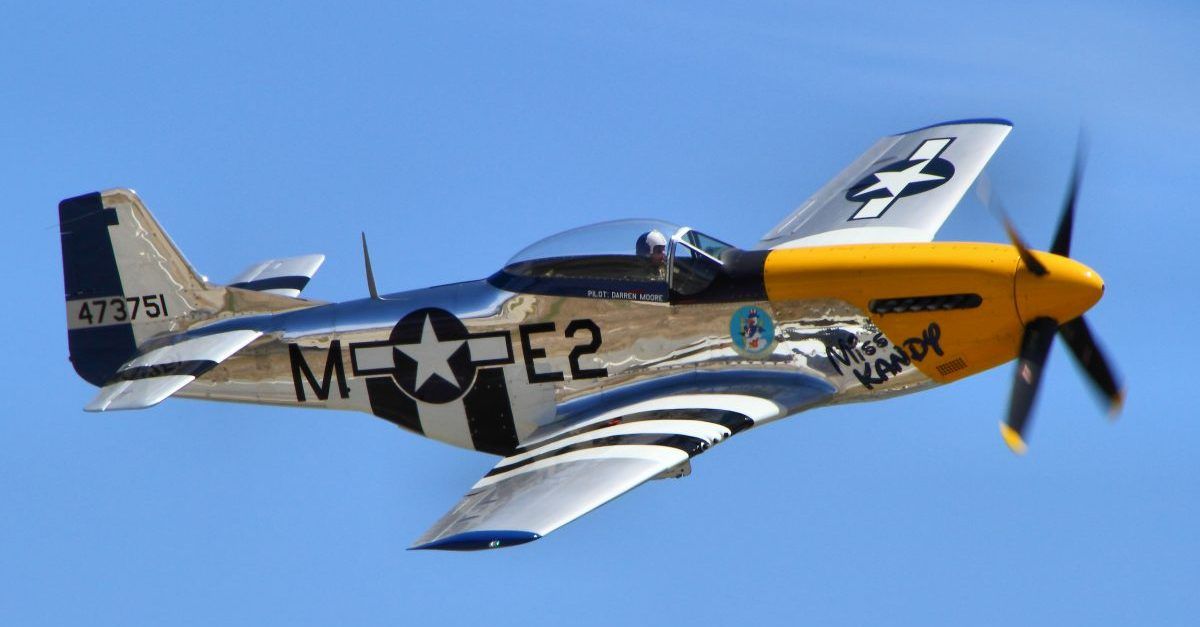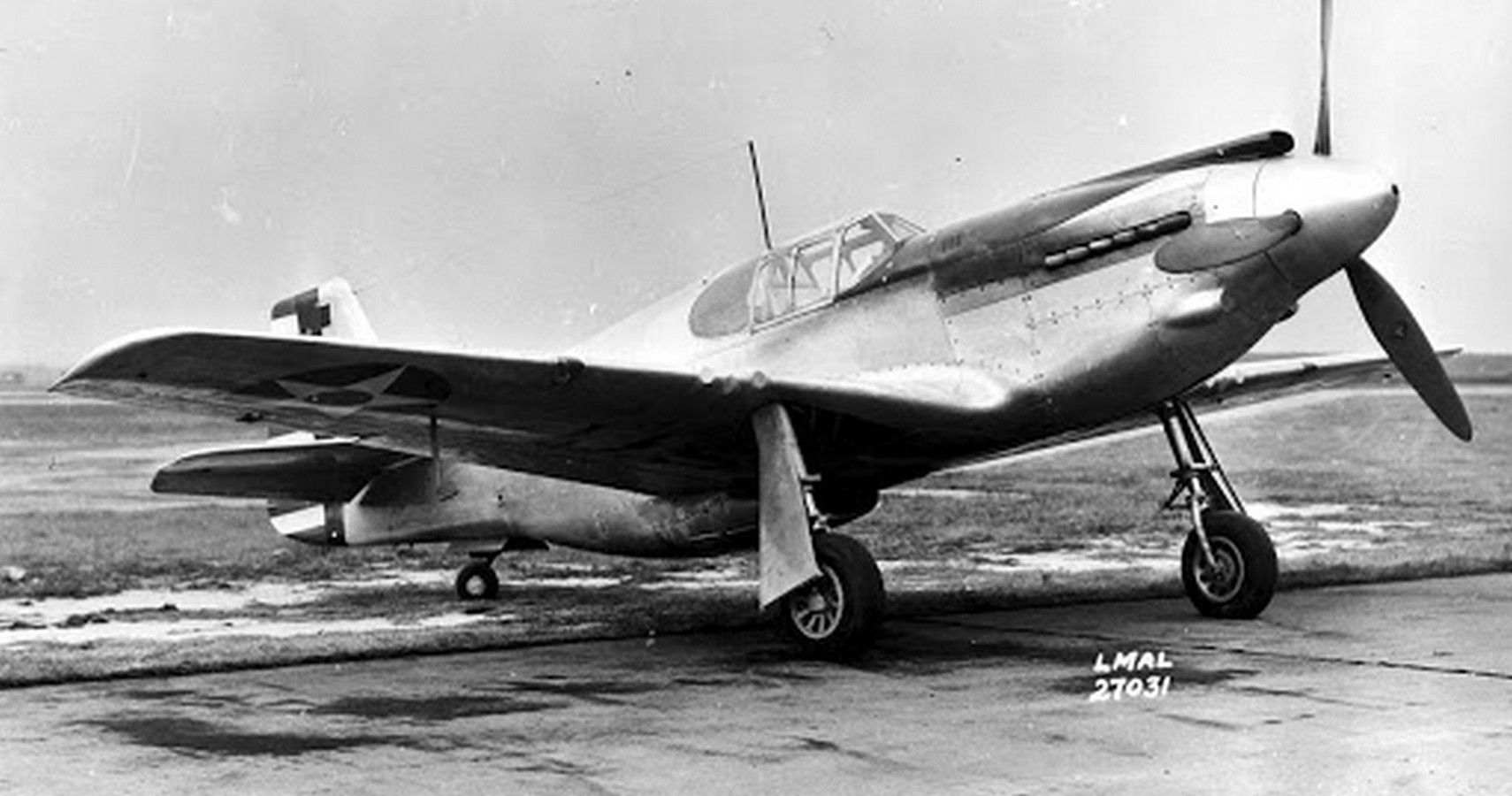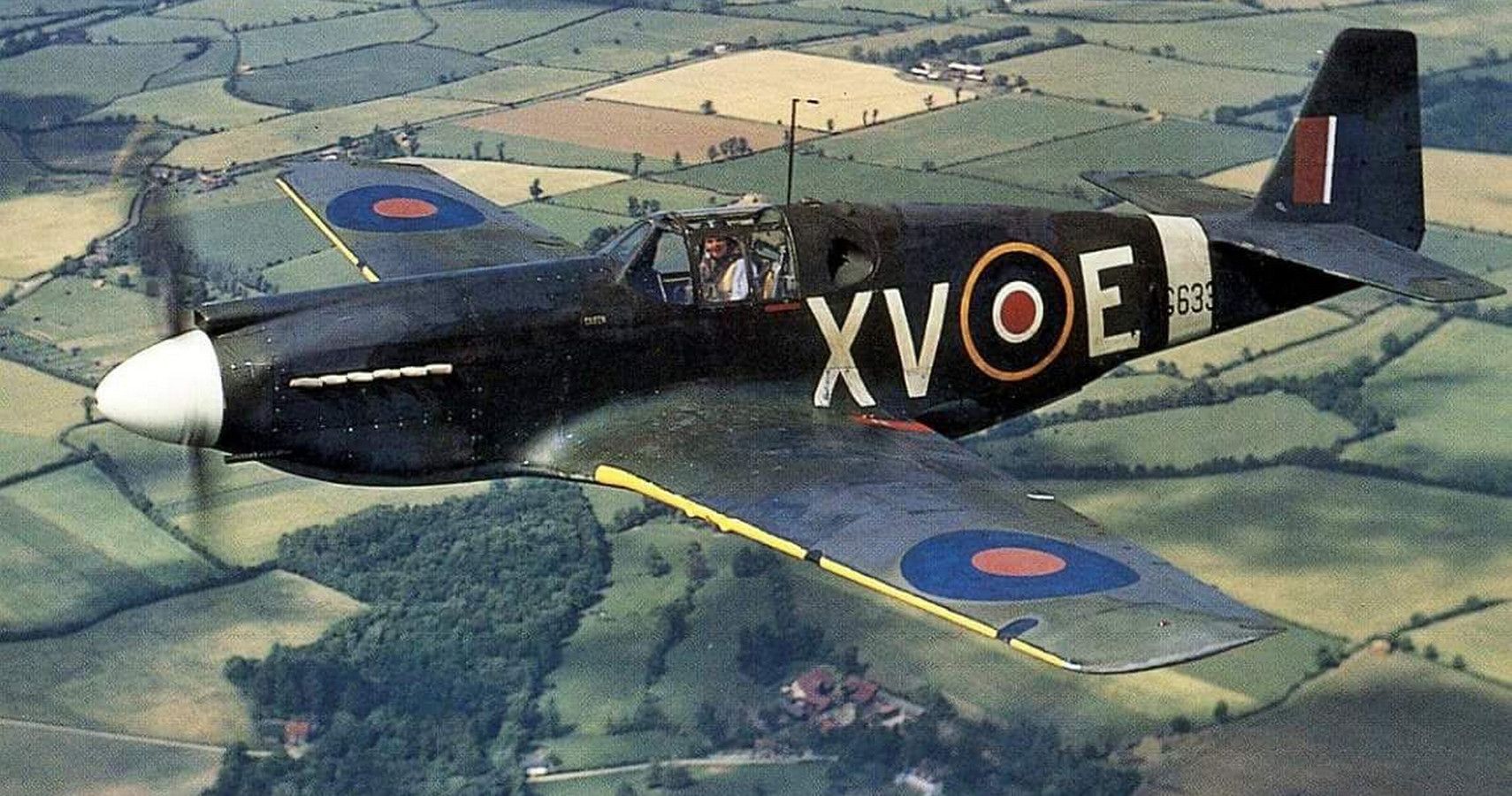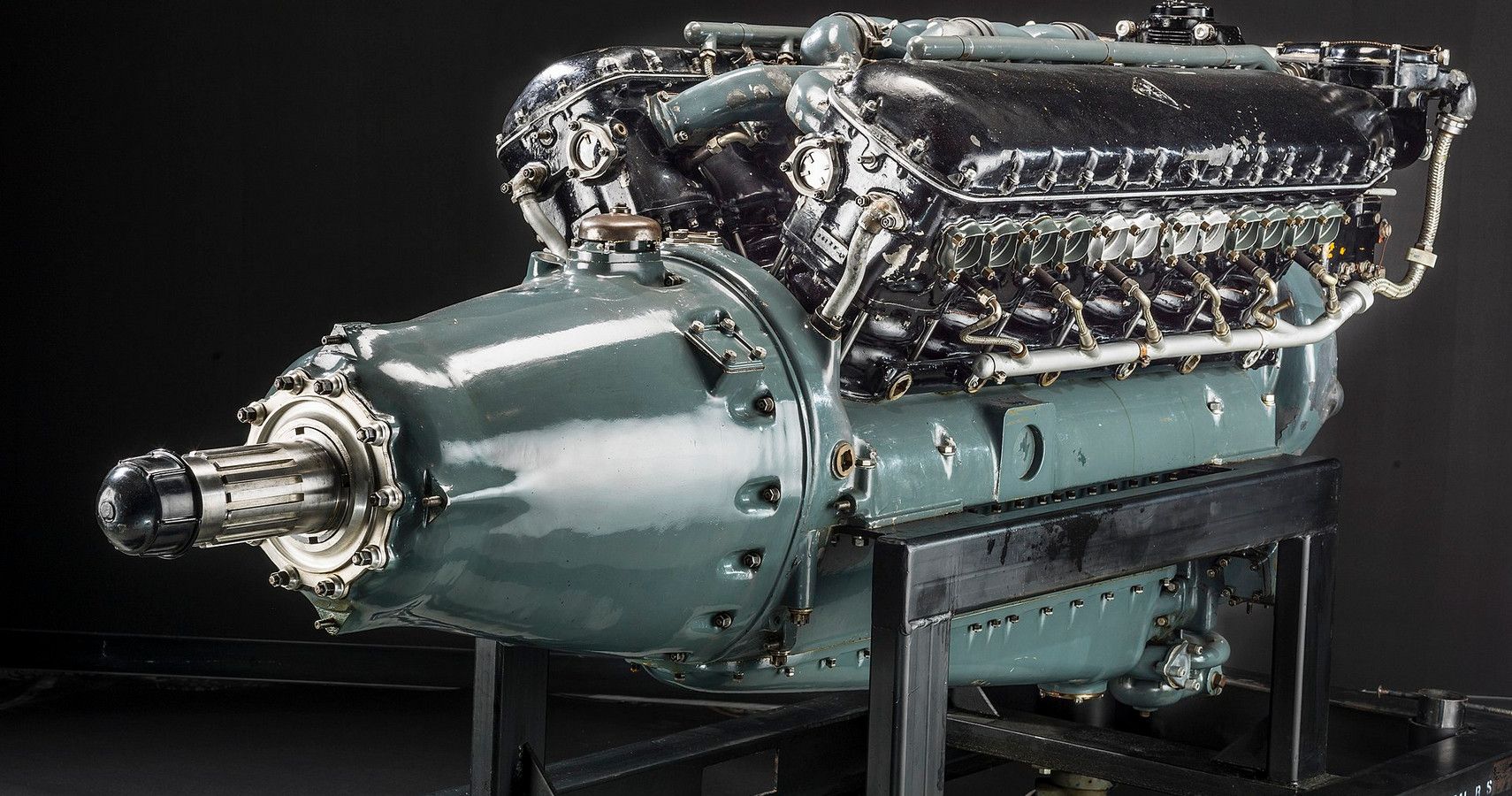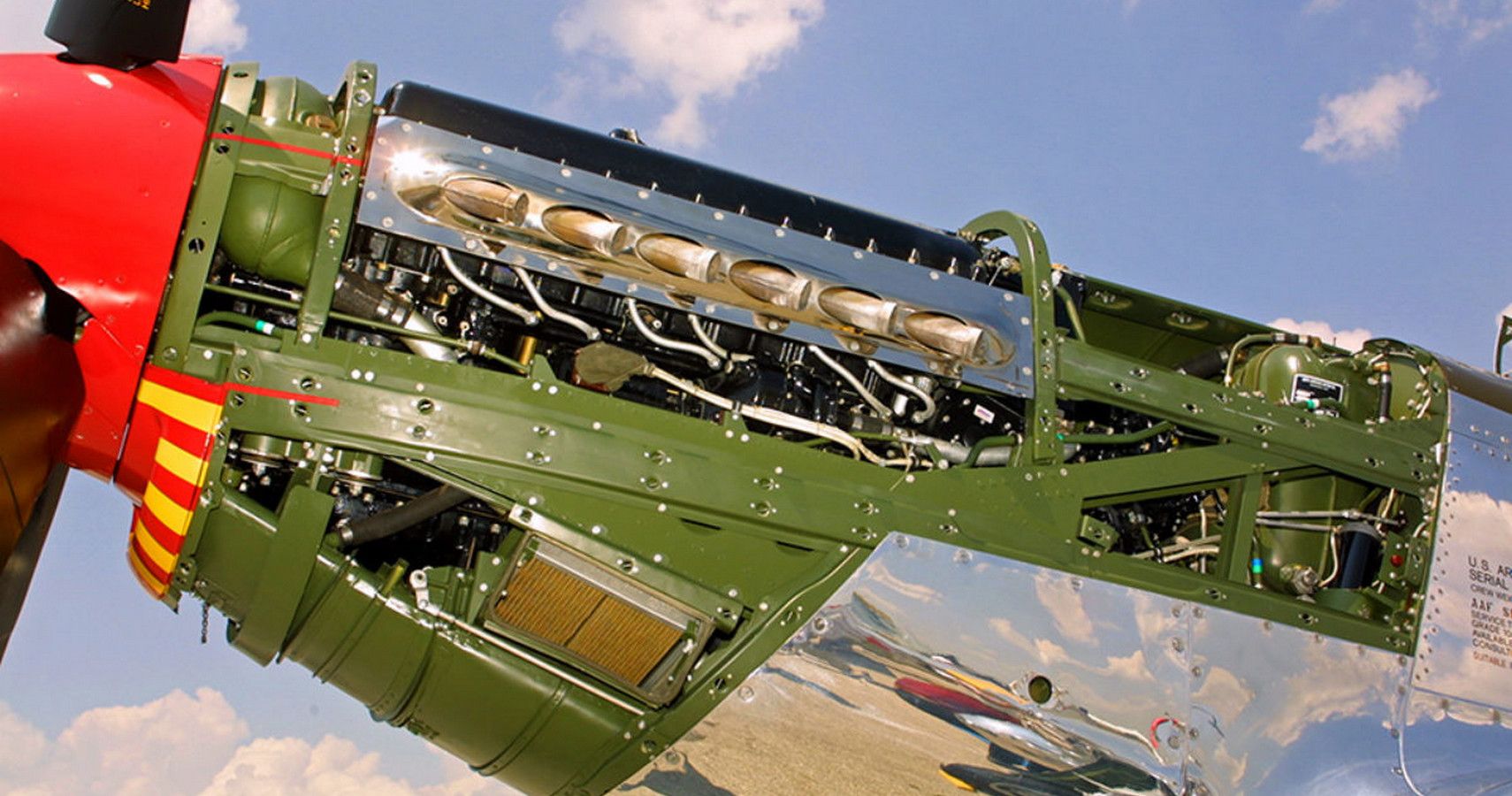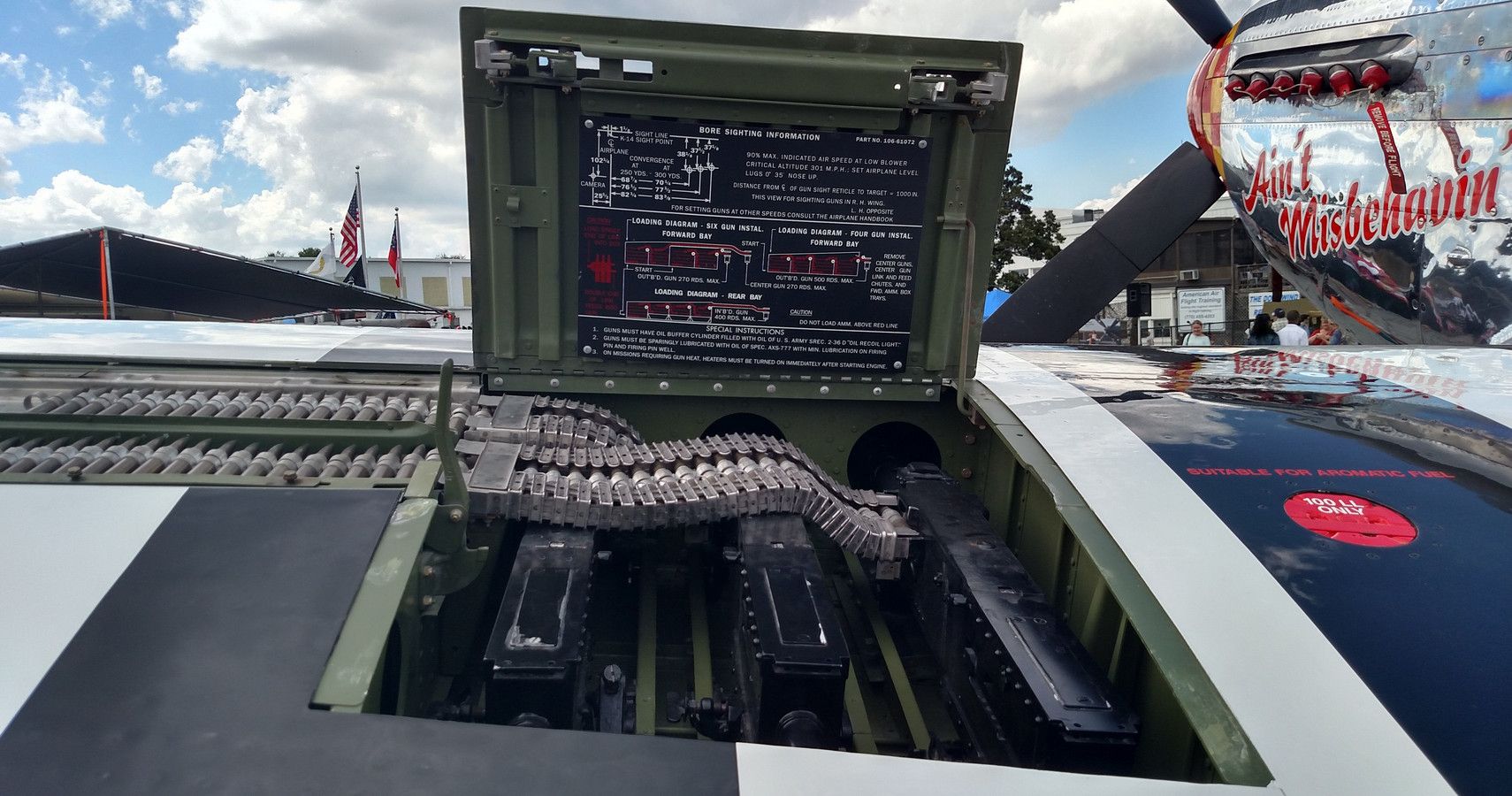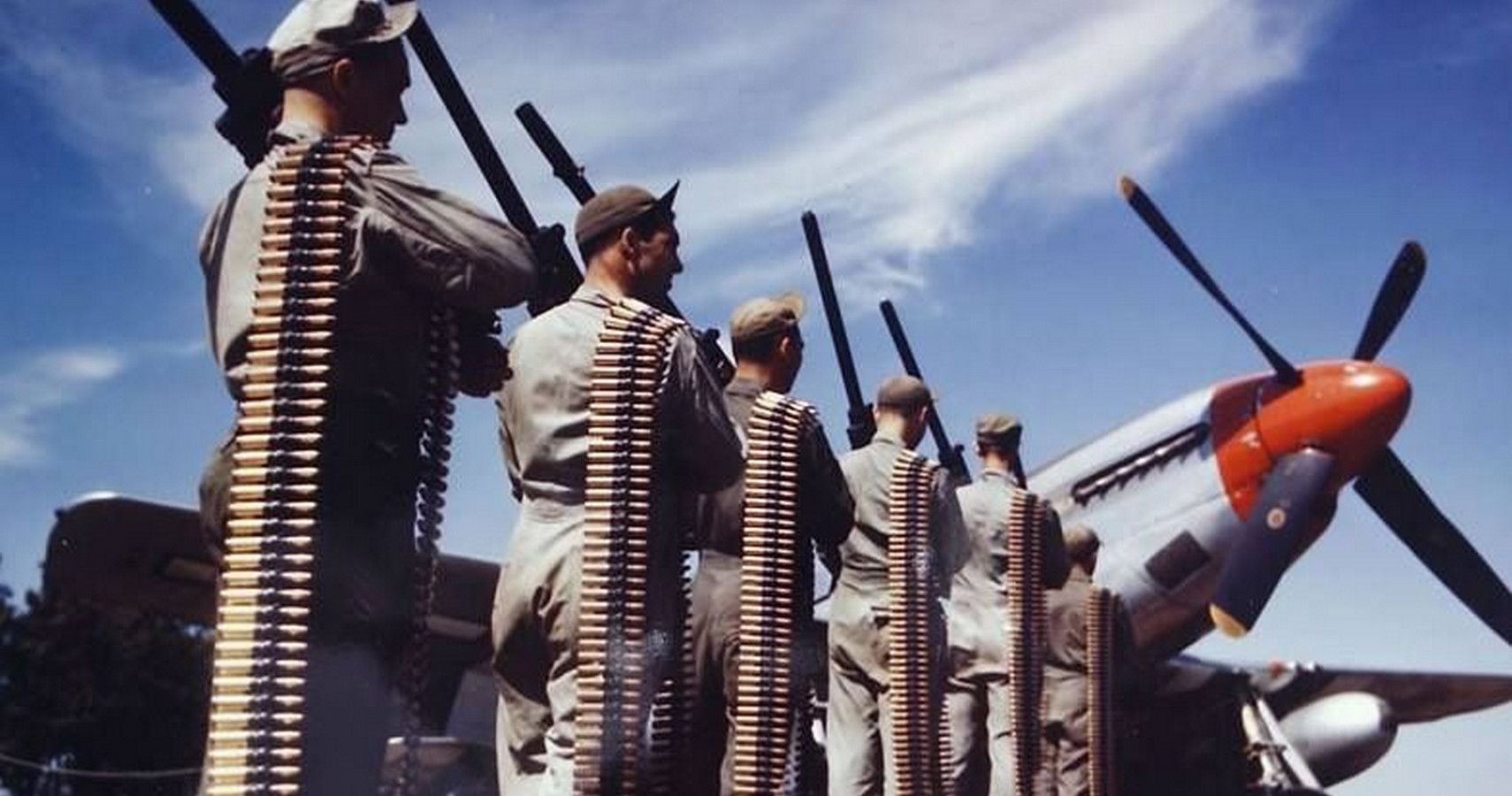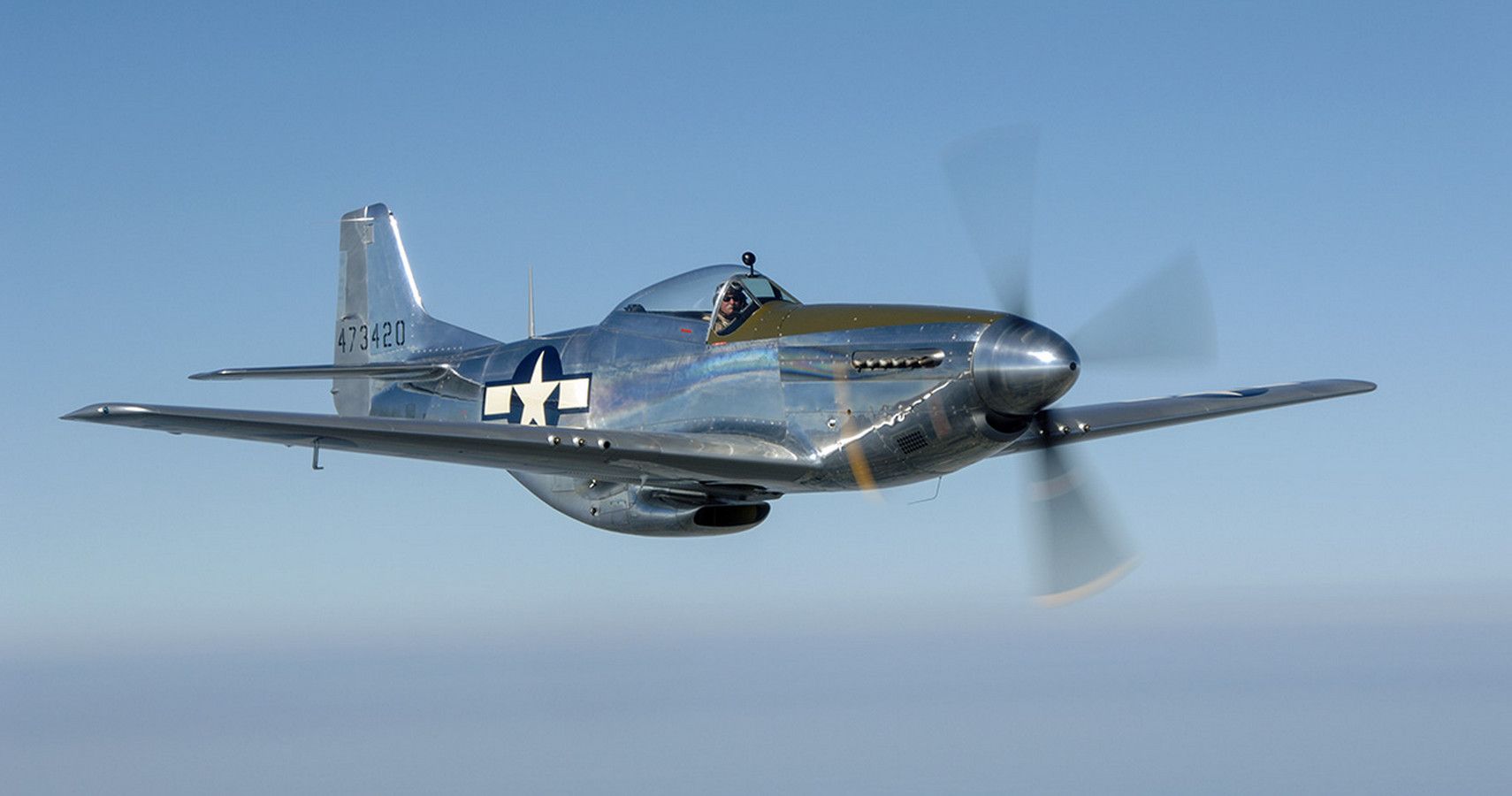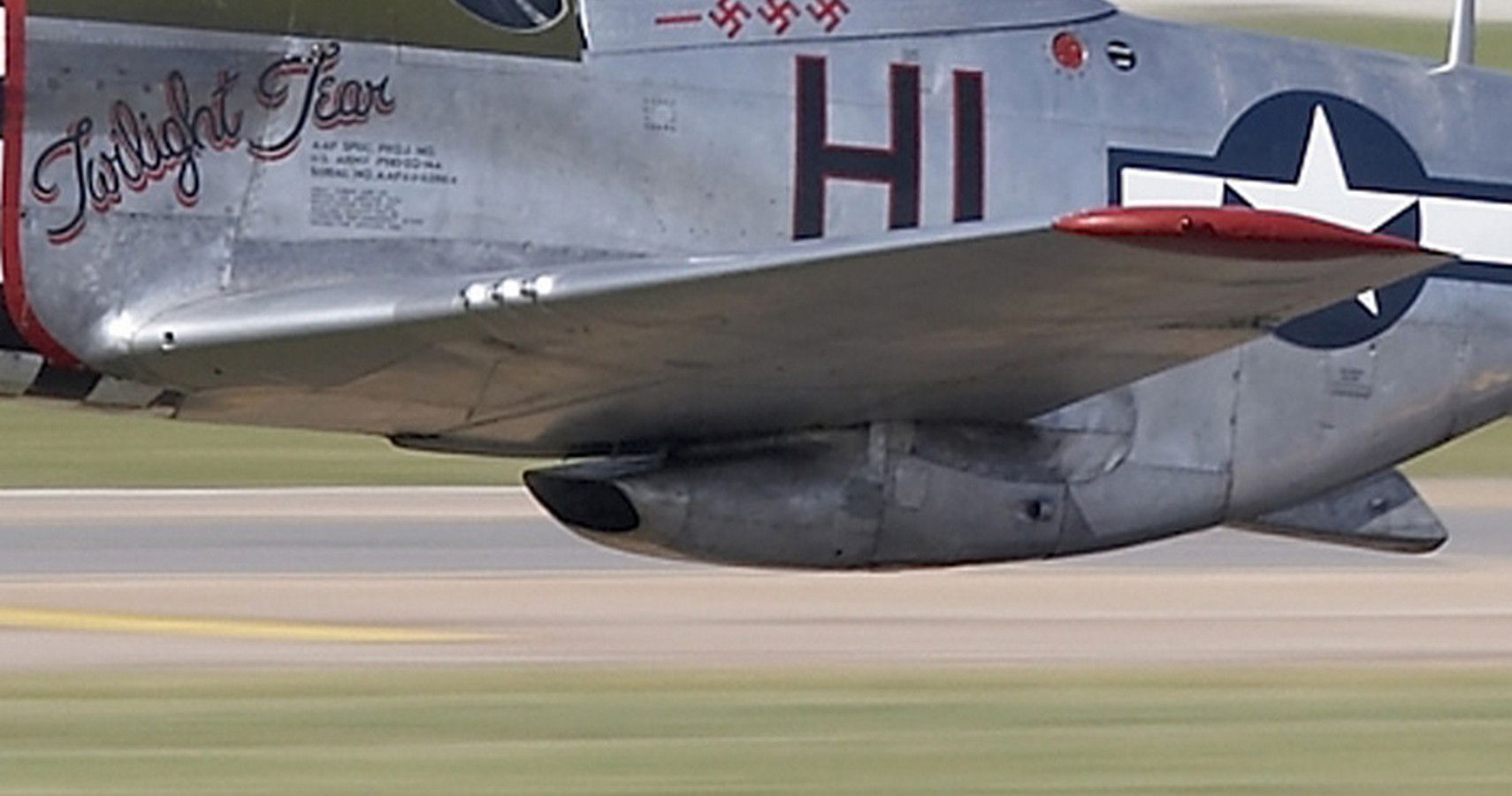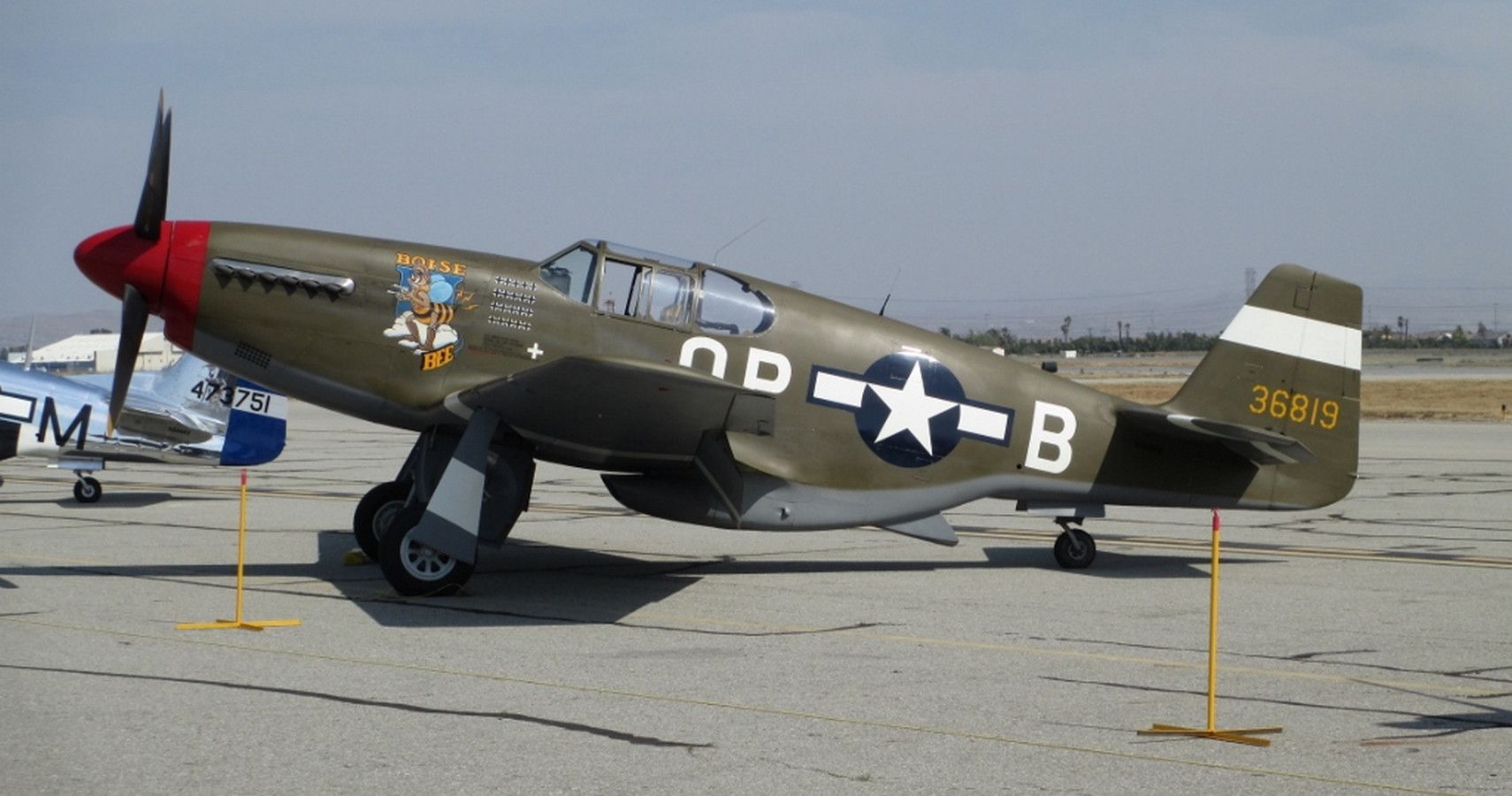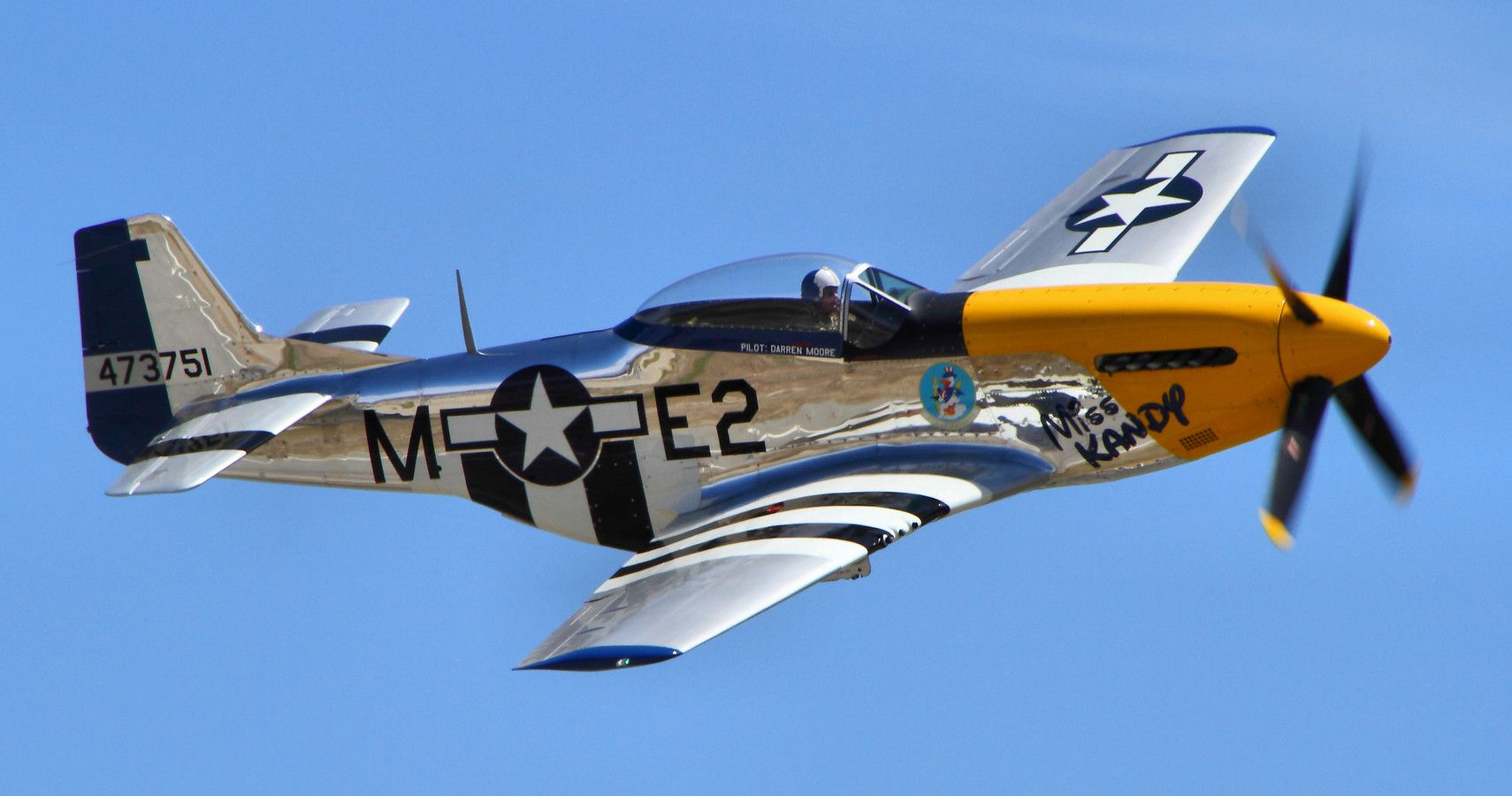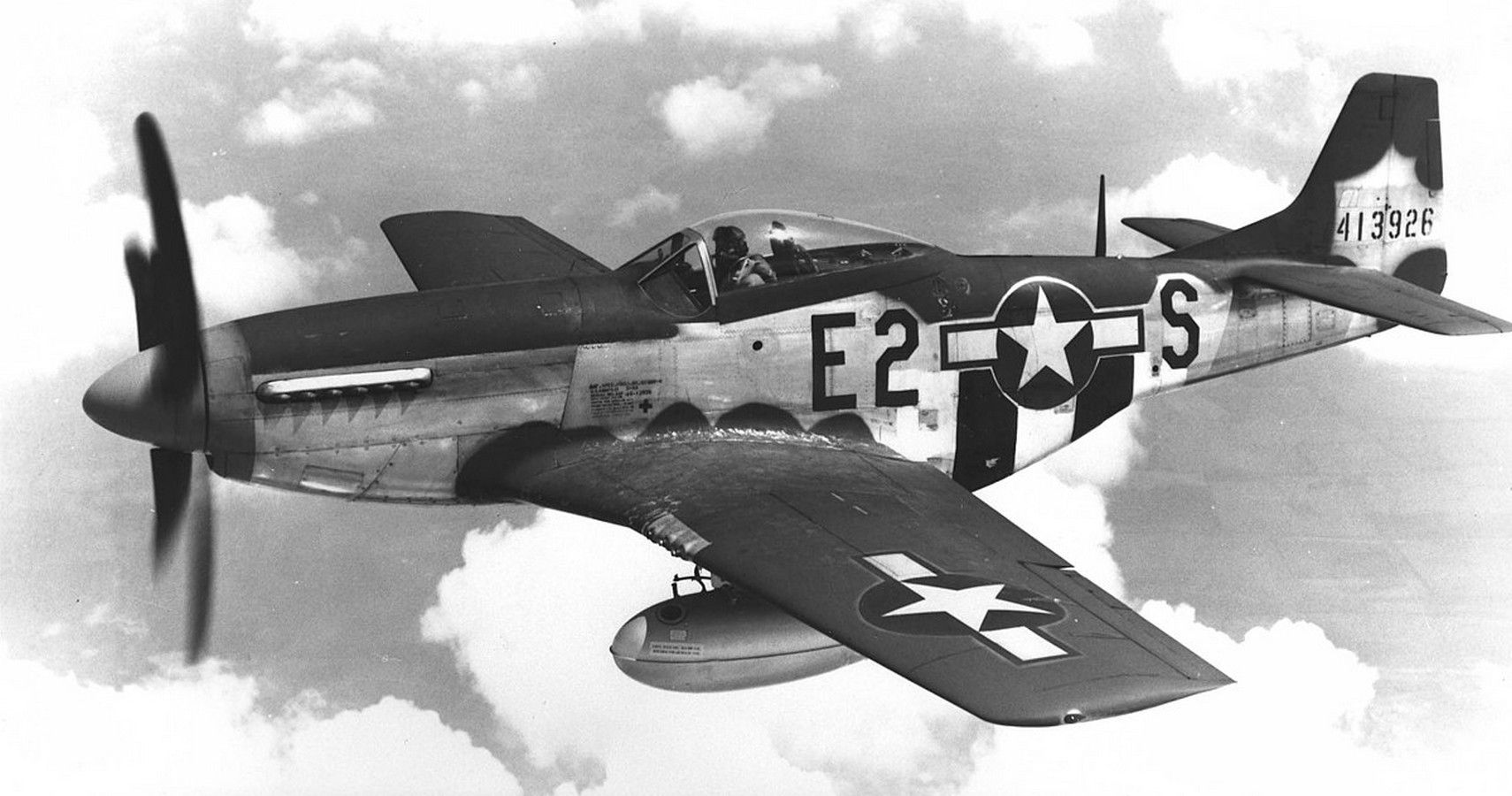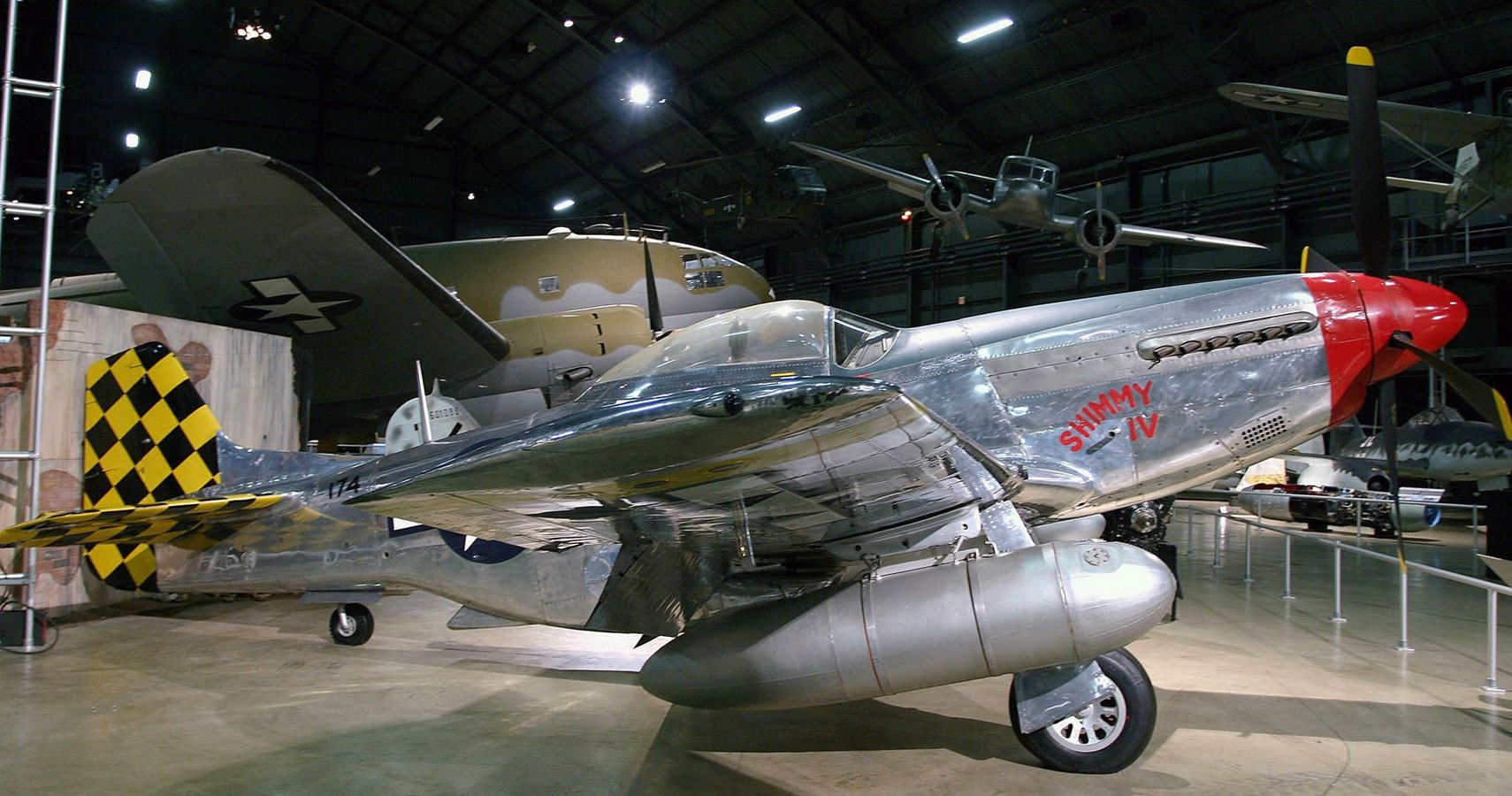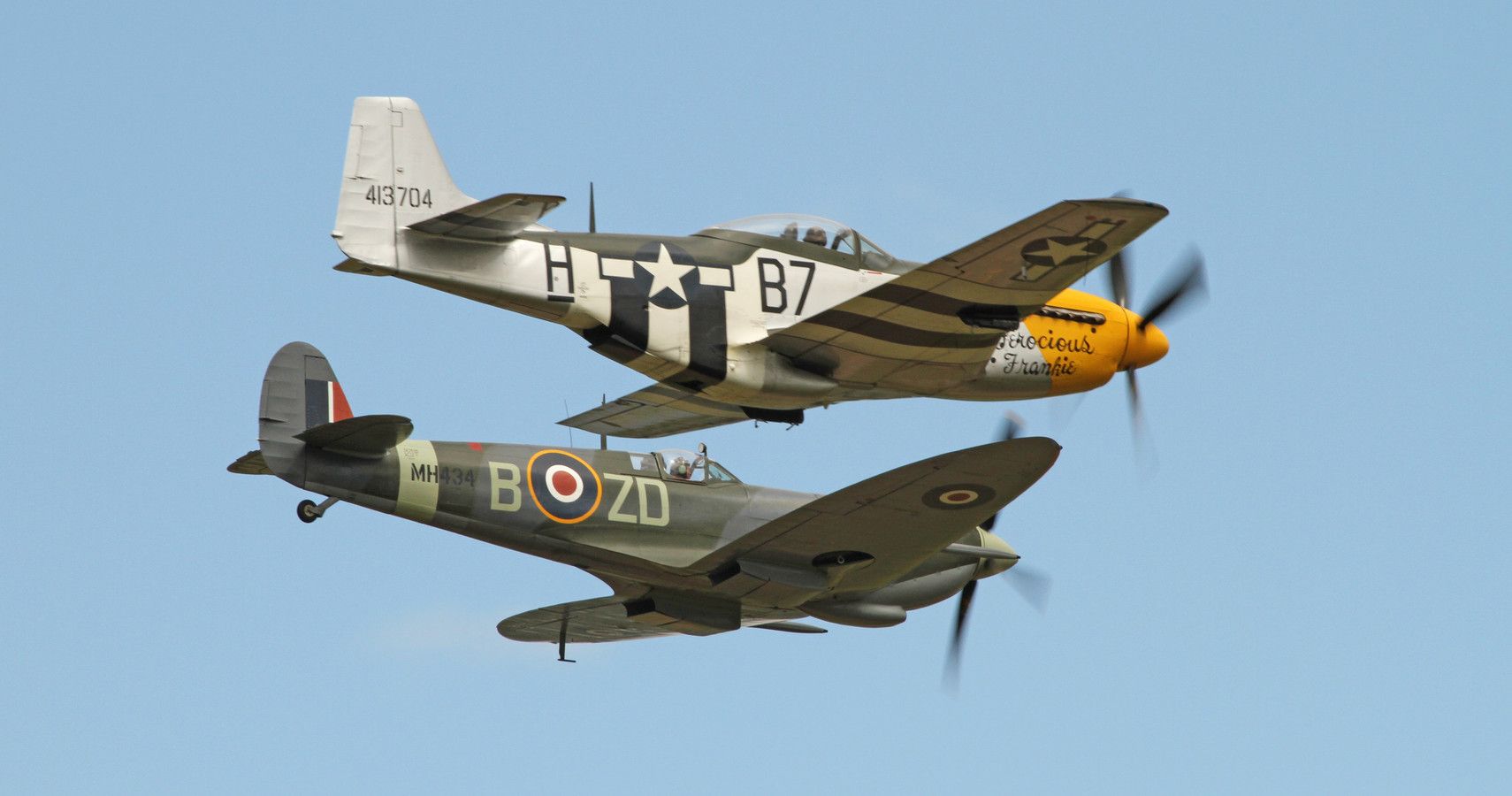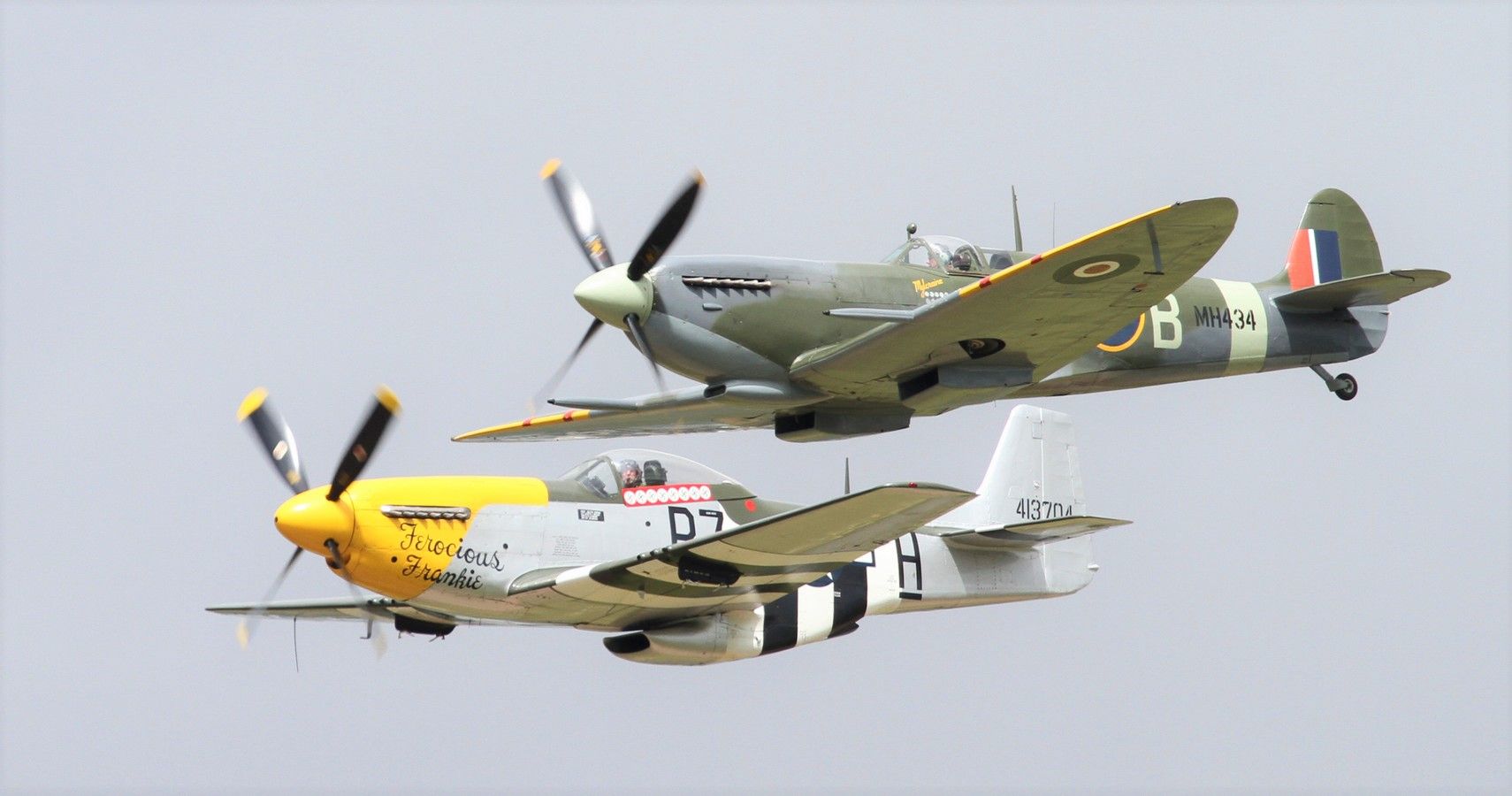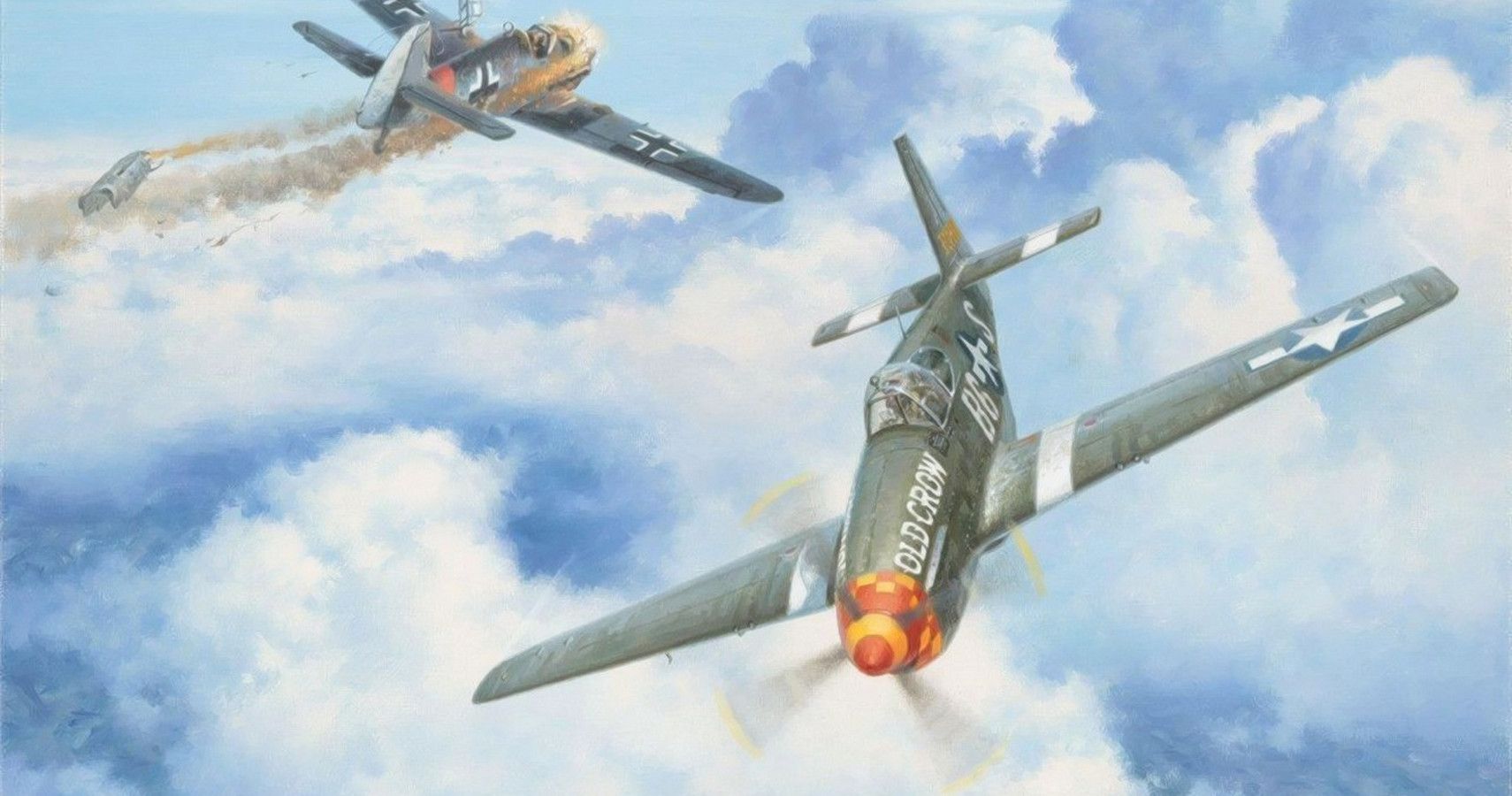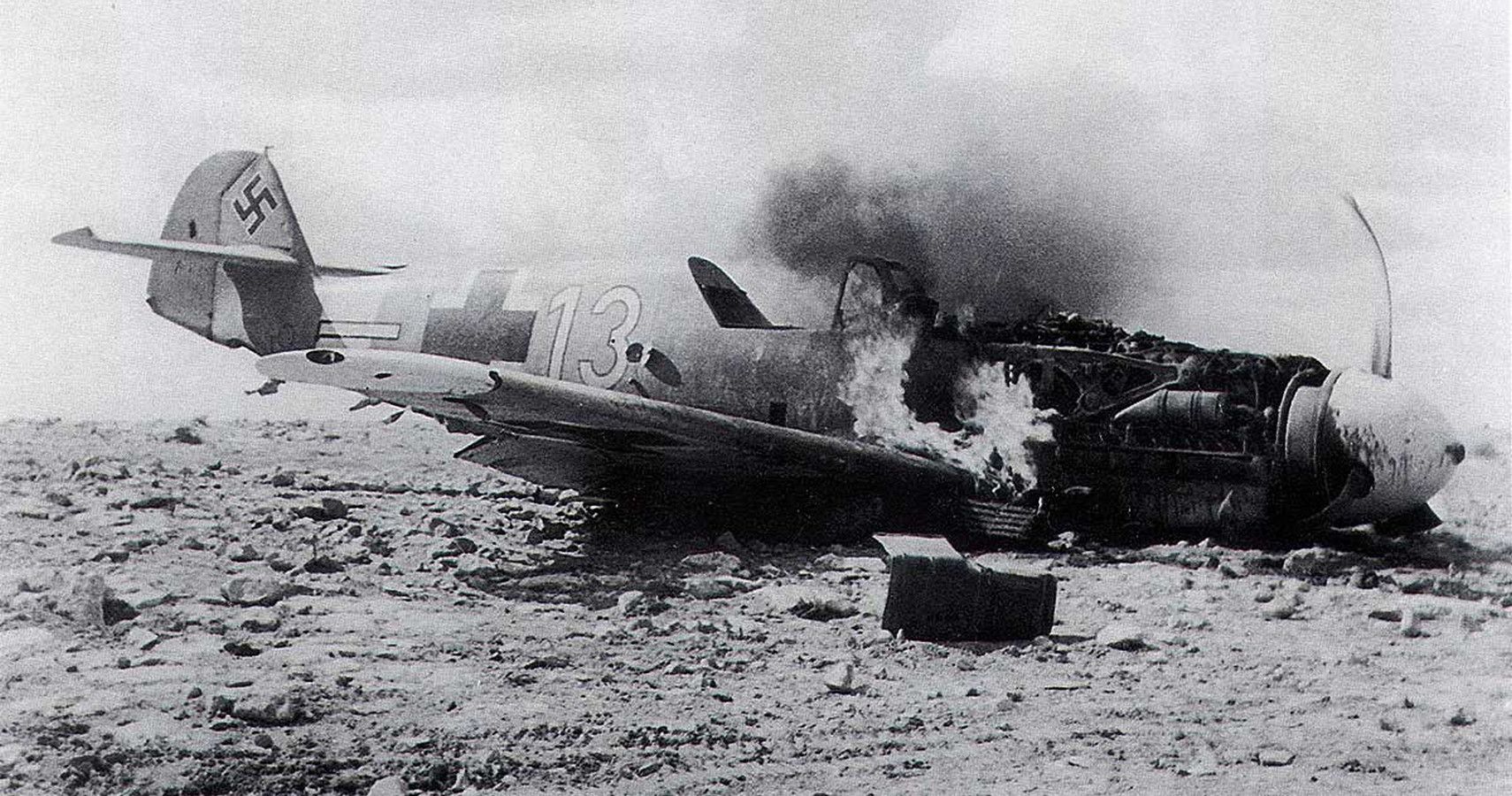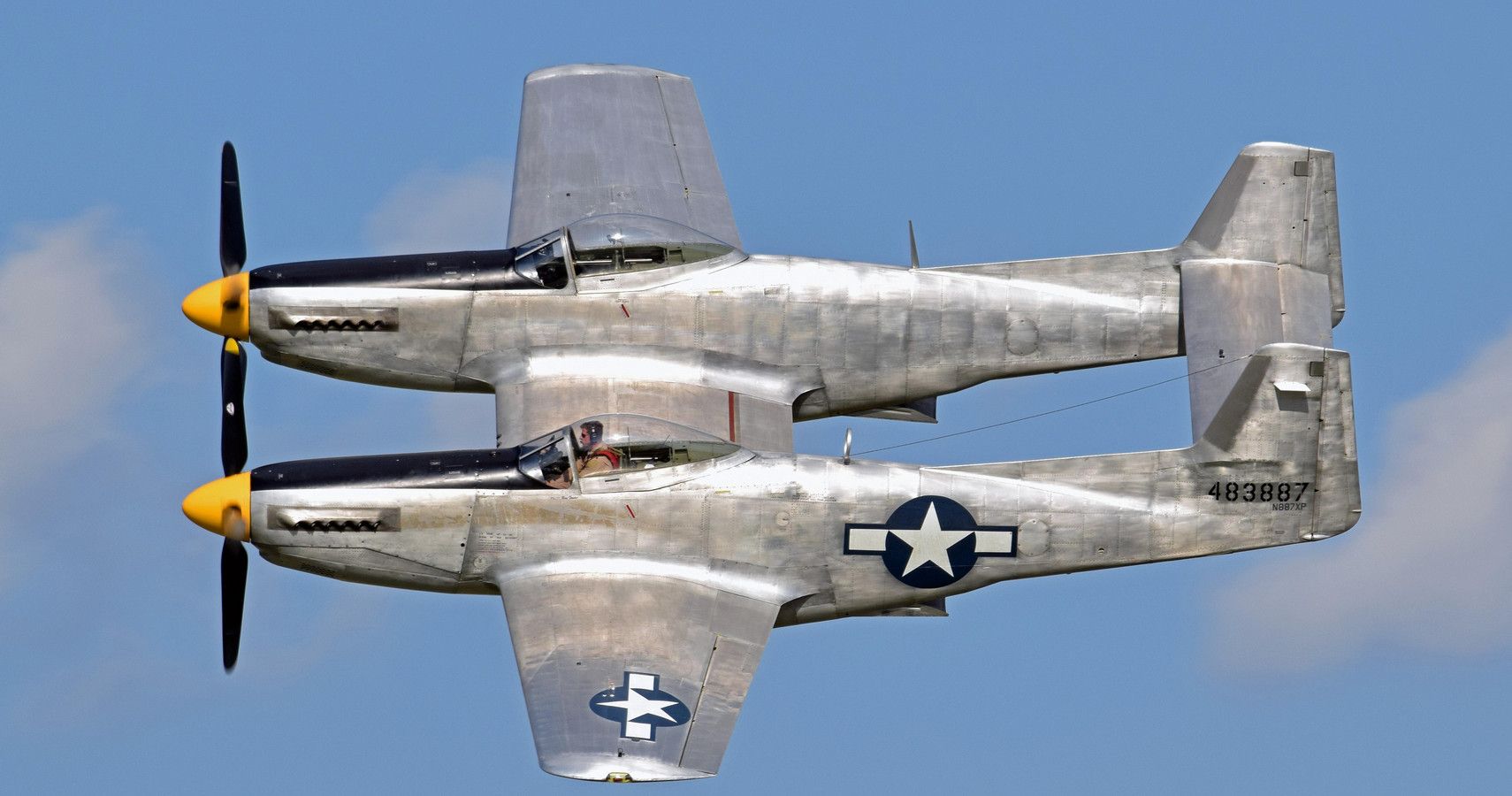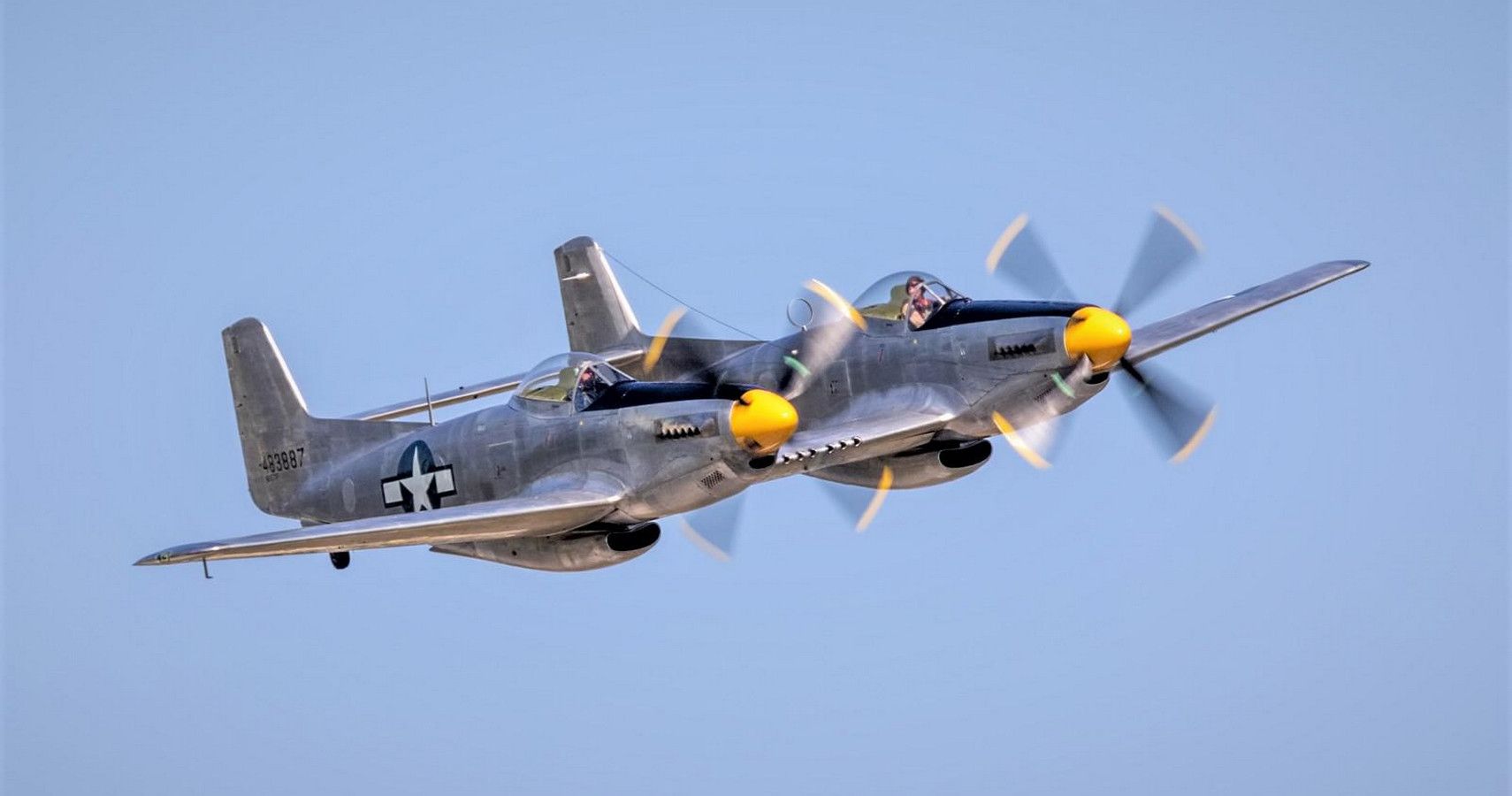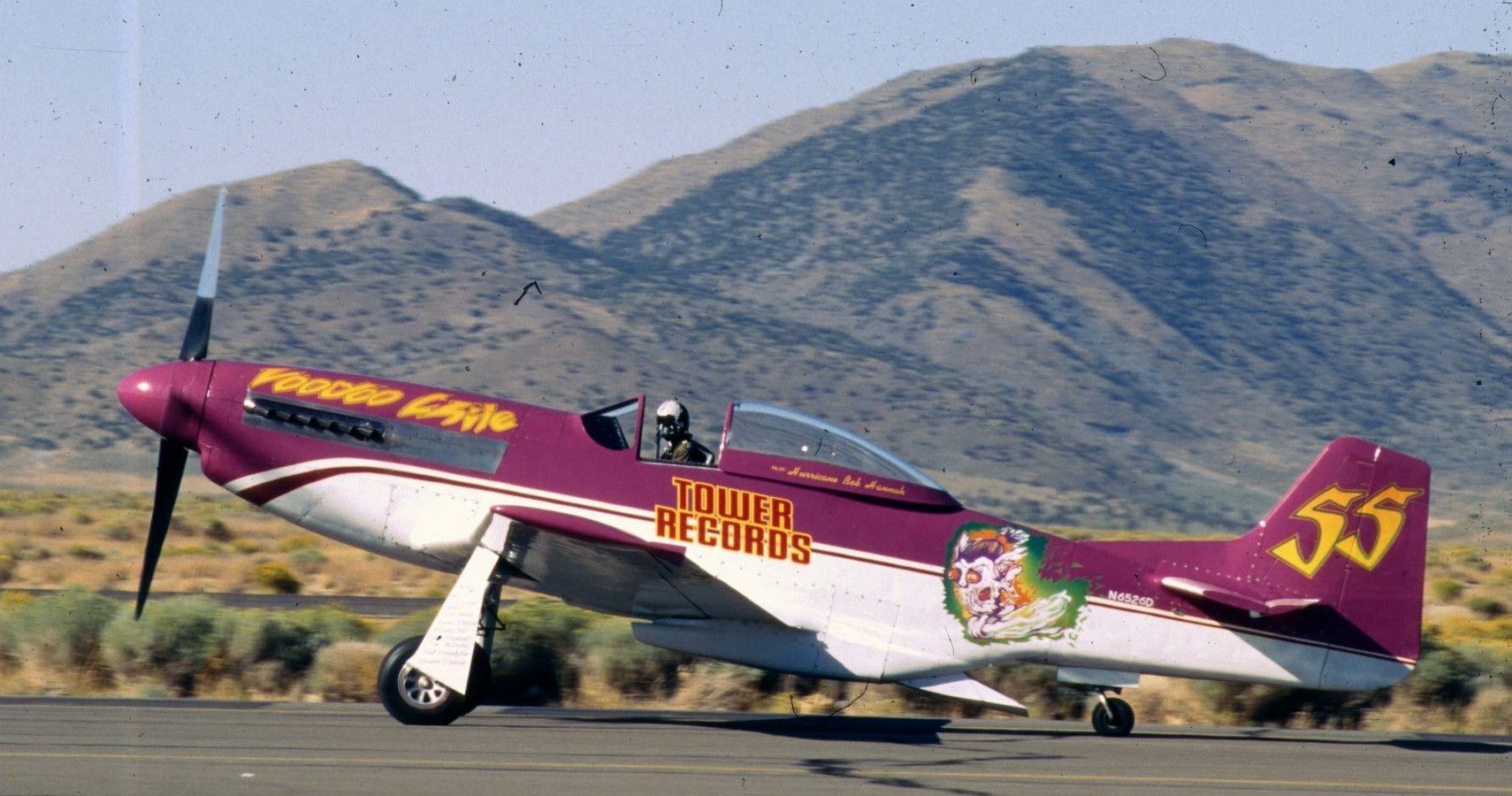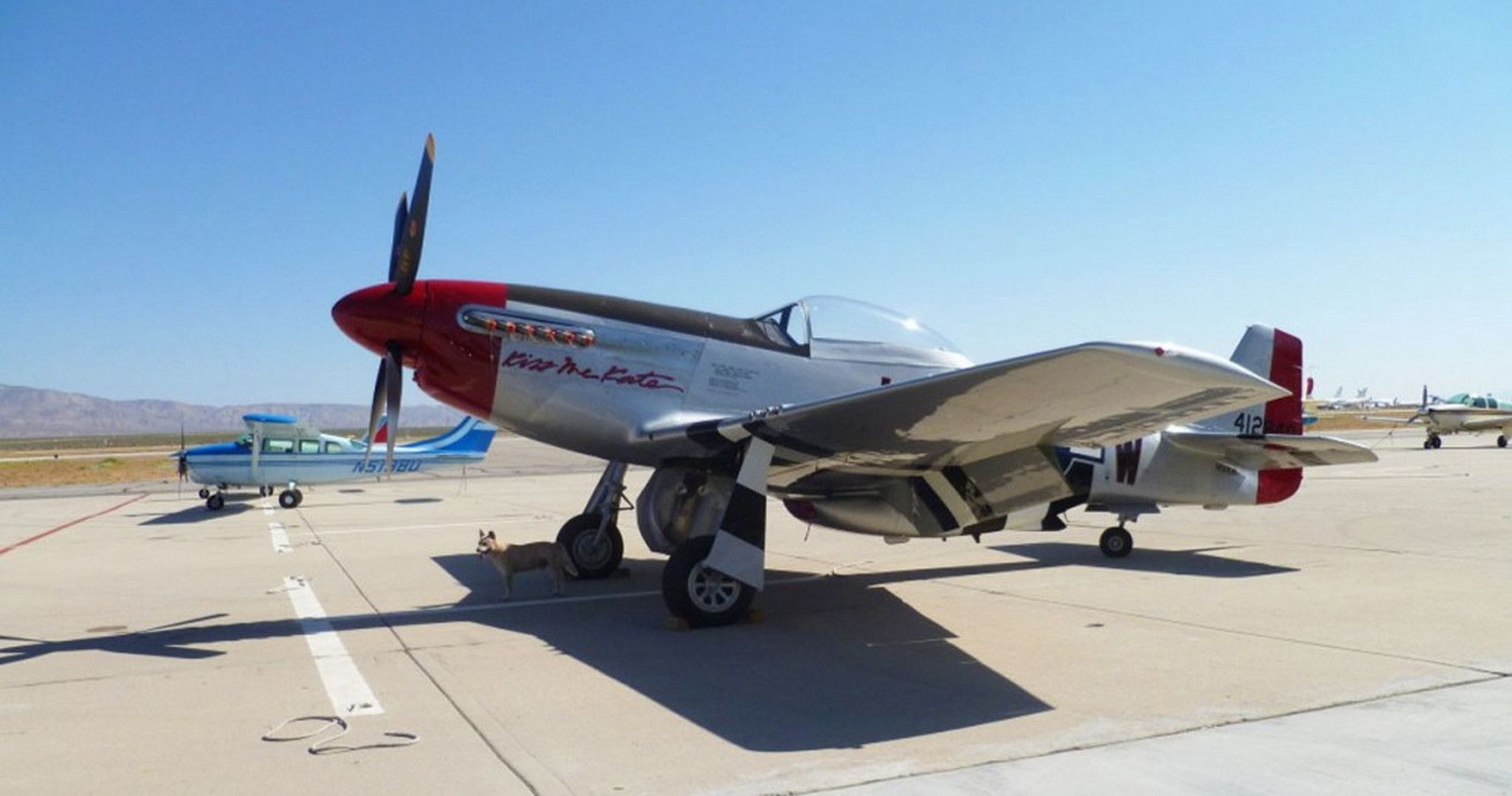Depending on which side of the Atlantic you are from, the answer to which fighter was the best during WWII is going to differ. National pride aside, the P-51 Mustang surely deserves the crown of the greatest.
European fighter plane designs of the time were all about swooping and diving. Their maneuverability, essential for dog-fighters, also hampered performance and ability. The Mustang changed the balance of power in 1942, the first operational aircraft served as a huge wake-up call for the Luftwaffe, air supremacy had firmly swung towards the allies.
With so few surviving aircraft left, it's high time we looked back at the Mustang, revealing some interesting facts most people will have forgotten.
10 Origins And Requirements - From Design To Testing In 102 Days
From a clean-sheet design to a flying prototype, the P-51 first took flight in October 1940, North American designers and engineers completed the impossible requiring a mere 102 days to build one of the most decisive aircraft of WW2.
Despite its American origins, the Mustang was actually designed and built to meet RAF fighter commands' need for more aircraft, initially seeking to procure the P40 Warhawk which was in low supply led to North American submitting its own ideas for a long-range fighter.
9 Almost Perfect - The Switch To Rolls Royce Merlin Engines
Developed and first flown in such a short period only serves to enforce just how good the Mustang was, agile, robust, and seriously quick with a top speed of 384mph. Despite impressive early performance claims, the Mustang had limited high-altitude performance due to its engine installation, a fix was needed and quickly.
Ditching the Allison V-1710 engine in favor of Rolls Royce's V12 Merlin transformed the Mustang's operational abilities dramatically without impacting range. All future P-51's featured license-built Packard units producing up to 1530hp.
8 Armament - Fewer Guns, Bigger Punch
Swapping to a lower gun count might seem like a backward step compared to its contemporary rivals that packed as many as eight machine guns, but the cold hard facts are that the smaller caliber munitions used by Spitfires and Hurricanes just didn't have enough punch
The Mustang used the much deadlier 0.5-caliber Browning AN/M2 machine gun design, equipped with three in each wing each capable of delivering 75 rounds per second with enough onboard stores for up to 32-seconds of sustained fire.
7 The Meredith Effect - P-51 Mustang Used Primitive "Re-Heat" For More Thrust
Among WWII fighter aircraft the Mustang with a single center-line mounted radiator is unmistakable, other allied designs relying on wing-mounted cooling solutions with greater drag.
Under normal circumstances drag for any aircraft is bad news as it has an impact on performance, North American designers turned the drag issues into a performance bonus for the P-51 using something recognized as the "Meredith" effect. Essentially the Mustang's radiator filled with ethylene glycol served as a heat exchanger which greatly increased the air volume, in turn adding a mild form of what we would recognize as re-heat today.
6 All-Round Visibility - Adoption Of The Bubble Canopy
Ask any aviation geek to identify the P-51 Mustang and most will look for the infamous bubble canopy design seen in later years. The original airframe design however used a more traditional cockpit canopy design, one that bears a striking resemblance to the one used on older P40 Kittyhawk aircraft.
A common issue with all allied aircraft of the period would be rearward visibility, in fact, this lack of sight among fighter pilots resulted in the most frequently used method of interception, attack from above and behind. Introducing the P-51D in late 1942 with its all-new plexiglass bubble canopy not only provided greater all-around visibility but also started a trend that continues in modern aircraft design today.
5 Endurance - To Germany And Back
Allied bomber formations flying for UK-based airfields had the range to strike deeper into hostile territory, but these sorties came with a greater risk particularly in daytime raids where Luftwaffe fighter formation could easily pick off the intruders.
What the USAF and RAF needed basically shaped the Mustang's development, a long-range bomber escort that could accompany allied aircraft for the duration of operations. Even with internal fuel tanks alone, the Mustang could cover 750 miles in combat conditions, doubling this figure with the use of external tanks.
4 Which Was The Best - Spitfire Versus Mustang
In terms of range, it's a clear win for the P-51 Mustang, designed from the outset to be a single-seat long-range fighter aircraft, it comes as no surprise with its overall size advantage that greater internal fuel translates to a superior range.
Performance is another matter entirely, later Griffon engined Spitfires had the upper hand in top speed (448mph vs 437mph) and rate of climb (3650ft per min vs 3200ft per min), but the Mustang comes out on top in most respects.
3 Most Deadly Allied Fighter - P-51 Mustang (5954 Confirmed Kills)
When it comes down to the numbers, no other allied aircraft comes close to the Mustang for confirmed kills with an impressive tally of 5954 enemy aircraft downed throughout the entire WWII campaign.
Adding to the Mustang's formidable reputation is the fact that P-51s arrived considerably later than other allied fighters, this leaves us to wonder how many more kills would have been recorded if the Mustang had been operational at the outset of WWII. However, in terms of outright numbers, the Messerschmitt BF-109 takes the record with 7,355 kills during Operation Barbarossa alone.
2 Stretching The Design - P-82 "Twin" Mustang
Towards the end of WWII developments in long-range bomber aircraft necessitated a new fighter escort, the USAF's existing P-51s no longer able to meet this requirement even with the use of external tanks led to the unusual P-82 "Twin" Mustang.
By comparison, this quirky twin-fuselage design might appear to be two airframes joined around a common central wing section, but in reality, the P-82 was a fresh design, considerably larger in length by some 1.44 meters allowing for greater internal fuel loads. Further changes would see the main armament moved to the central wing for more concentrated firepower.
1 Into Retirement - But Still In Demand
Throughout its production life consisting of 15,000+ airframes, the Mustang remained at the front of all allied fighter operations during WWII taking its toll on surviving aircraft numbers today. With fewer than 300 Mustangs left in existence, barely half of which are airworthy you would think that any that find their way into private hands would be cherished museum pieces.
Should such an important aircraft be locked away in a museum? We think not, and thankfully dozens of other aviation fans feel the same way. Visitors to Reno's air races can still see these magnificent aircraft in flight, albeit slightly modified for competition use, most sporting engines with nearly double the power of the original design.

